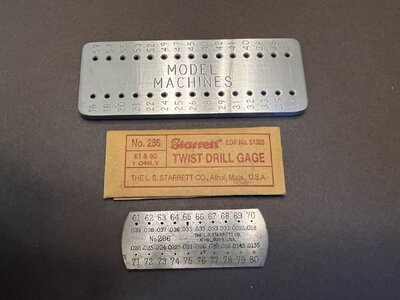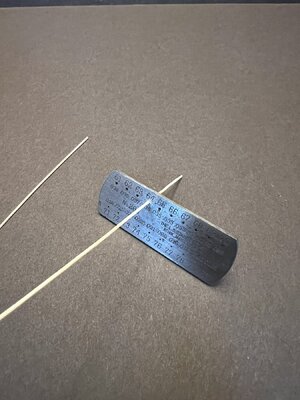I'll defer to your experience Allan.I think this is a good one to agree to disagree. My Byrnes plate goes down to 0.016 which is good for treenails down to 3/4" at 1:64 scale. For the hull planking, with treenails of 1" to 2" the largest holes are fine. Finding a wood species as Bob mentions is another issue. I have found bamboo to work well depending on the species. Bamboo skewers can be split then run through the plate down to the smallest size. There are some tricks to using any plate but getting to 0.016 is readily doable. I have cheap plate with larger holes than on the Byrnes plate but at our most common scales it rarely sees the light of day. Just one more opinion
Allan
Working at 1:48 I can get 0.56-0.58 mm trunnel stock (nominally 0.022 inches) out of (non-european) boxwood on the Byrnes drawplate which leaves a number of holes unused. I guess we might begin to wonder about even having treenails at smaller scales but that is quite off-topic. As you mentioned, I have also been able to get bamboo down to an even smaller size, but at 0.58 mm (my target) the end grain wasn't for me. That concern might go away at a smaller size.
But I will reiterate the substance of my post: a revised Byrnes drawplate that DIDN'T skip holes sizes would be gold!










